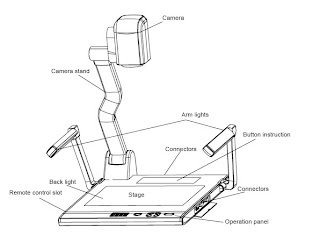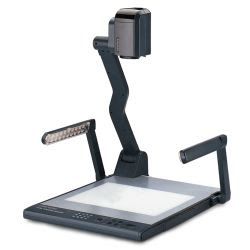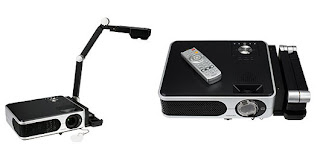The arm of document camera or camera stand
Document cameras usually have one of two kinds of camera stand which functions to connect the document camera's camera to its base stand. A gooseneck camera stand has a flexible column which can be bent and flexed to position in order to view the subject material. A rigid camera stand has a fixed column .Modern document camera models use gooseneck camera stand.
The base of the document camera
the base of a document camera serves two main functions. First it provides the stage to place the subject material being present. Secondly, it also contains I/O connections, operation panel and power connection. Some Document camera base has a backlight to illuminate the object from behind. The backlight is used to display transparencies and negatives.
The camera of the document camera
the integral part of any document camera is its camera and determines the level of image quality that the document camera is able to display. The camera uses either CMOS (Complementary metal-oxide-semiconductor) or CCD (charge-coupled device) as image sensor technology.CCD document cameras products high-quality images with high resolution and is expensive. On the other hand, CMOS document cameras products low quality images, low resolution and are less expensive as compared to CCD document cameras.
The document camera's operation panel
Document camera operation panels are designed with pushable buttons providing control of functions to presenters. Desktop document cameras models have an operation panel that is located either on its head or at the front of the base stage. The type of functions that the document camera can perform determines the size and number of controls of operational panel.
The document camera's input and output connections
A document camera's input and output connections panel are located at the rear or at the side of the document camera's base stand. Some common I/O connections in document camera are15 pin RGB Connector,4-pin mini-DIN Connector for S-Video, RCA or BNC connector for composite video and USB 2.0 for Connectivity to a PC.









